Jawline Contouring: How to Prevent Lower Face Filler Complications
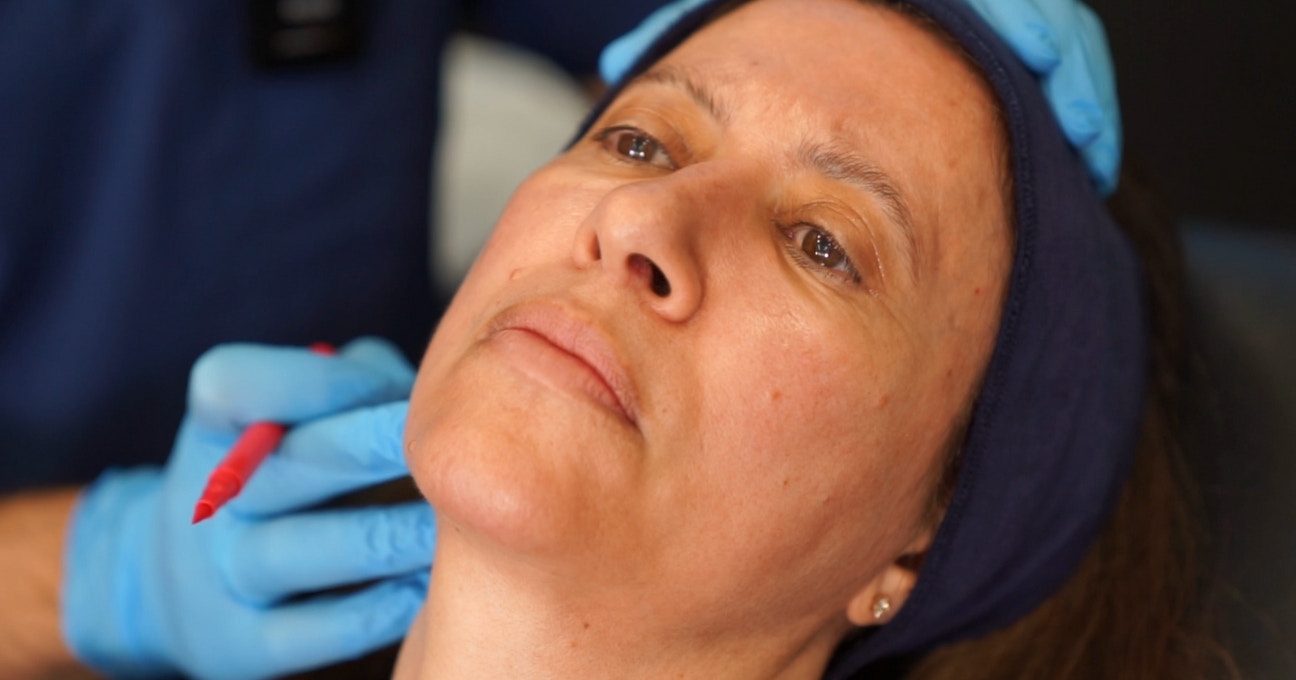
Jawline contouring has established itself as a noteworthy aesthetic approach that can provide impactful results that still look natural.
In the right hands, jaw filler can give men and women beautiful outcomes. This is true of both beautification and rejuvenation cases.
But do you know what the potential complications of jawline contouring are?
We interview clinical trainer and aesthetic medicine specialist, Dr Lindsay Jones. She shares her expertise on preventing filler complications with specific reference to chin and jawline filler.
Before we look at how to avoid filler complications from jawline contouring, let’s first confirm exactly what’s meant by this term…
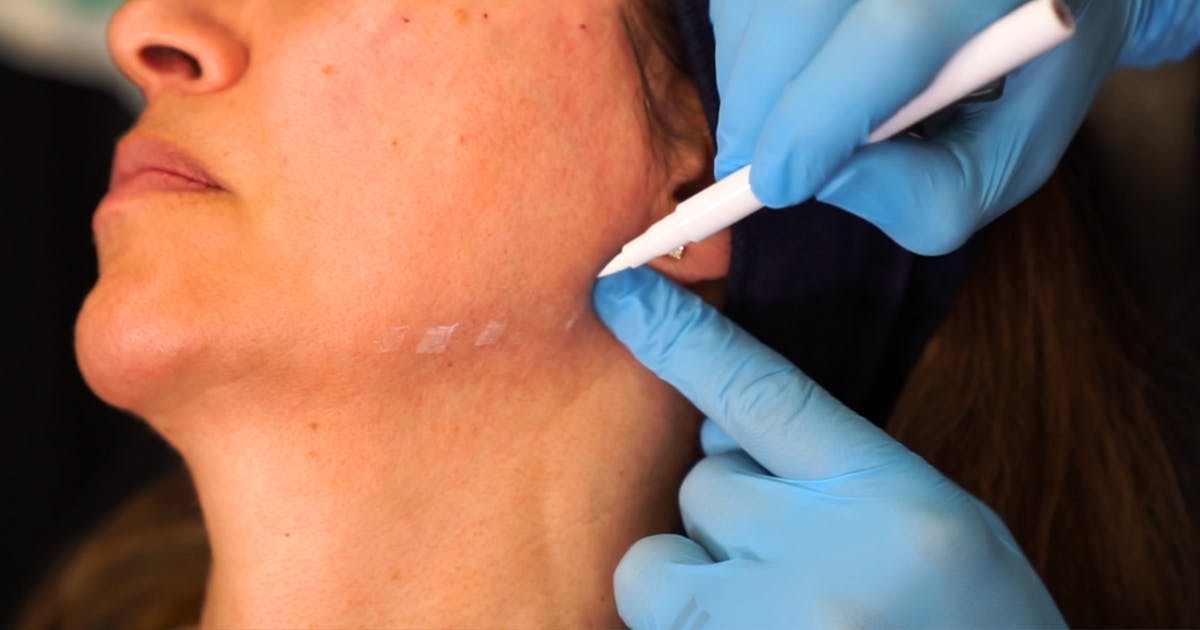
What is ‘jawline contouring’?
Usually, ‘jawline contouring’ refers to using soft tissue fillers to reshape and add definition to the jawline. This often includes also treating the chin as treating this area has impact on the jawline too.
In addition to having benefits to the face when seen front-on, this treatment is also part of the ‘non surgical profiloplasty’ approach. Its effects can help with profile balancing, with regards to adding definition along the jawline and adding judicious volume to the chin.
Jawline contouring is taught at Harley Academy during our Level 7 Diploma in Botox & Dermal Filler courses. These cover the theory as well as mentored practical cases.
Additionally, we offer a dedicated Facial Contouring Injectables Masterclass where medical aesthetics practitioners can hone their approaches.
Filler treatments used in jawline contouring
The primary aspect of jawline contouring is treating the jawline itself with hyaluronic acid-based fillers. These should have a high G prime as you want a fairly rigid consistency for this area.
The angles of the jaw, where the jawline meets the neck, can be enhanced with fillers. Again, a high G’ is required.
Chin filler is often included in your contour, to help blend everything in for a seamless appearance. It can also help to restore volume given the front of the chin flattens as we age. Giving it back a more curved side profile can look more youthful.
A medium-to-high viscosity filler is appropriate for the chin.
Botox treatments that can be used alongside jaw filler
Whilst fillers are the most common approach, neurotoxin can also be used as part of these treatments. Although this article is concentrating on fillers, there are two common botox treatments used in conjunction with jawline contouring, worth mentioning.
Masseter botox
Injecting the masseter muscles with botulinum toxin helps to reduce muscle bulk. This has a slimming effect on the face. It also treats the symptoms of bruxism.
Treating the mentalis
Injecting botox into the mentalis can prevent the chin from rotating upwards. This rotation can happen with age and contributes to the shortening of the lower third of the face. Therefore, if your patient’s goal is rejuvenation, this is certainly a treatment to assess for.
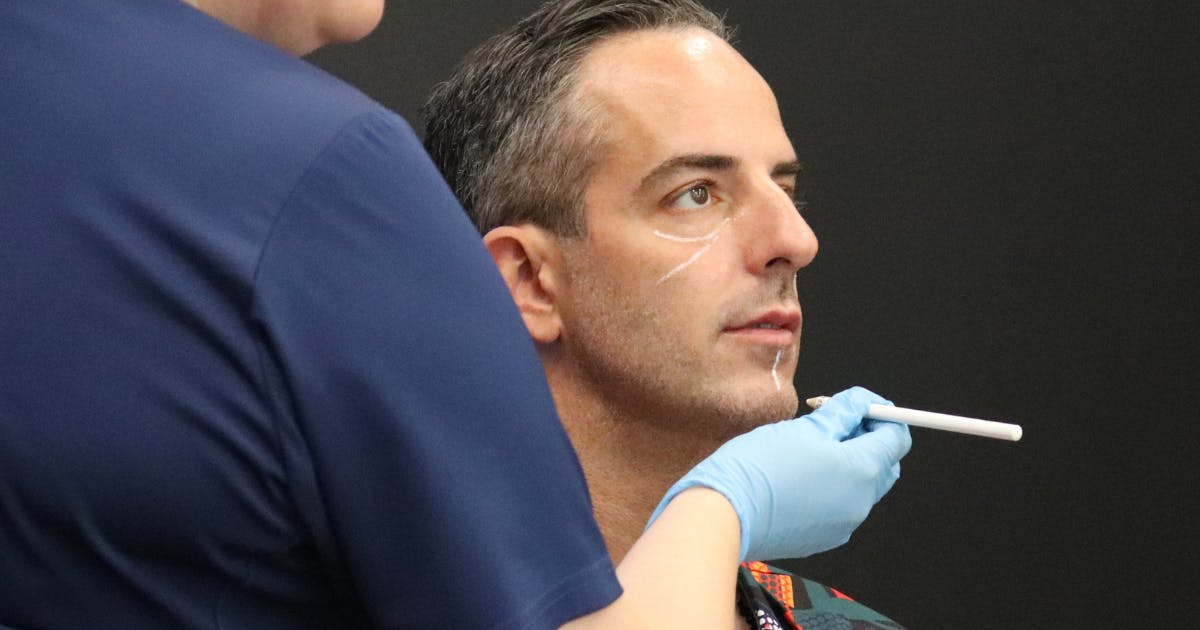
Potential complications from jaw and chin filler
“As with all filler injections there are common complications as well as rare and more serious ones,” reminds Dr Lindsay.
She advises that these potential common side effects include:
- Bruising and hematoma formation from blood vessel injury
- Swelling from injection trauma and hyaluronic acid filler taking on water.
Less often, complications can occur. She lists these as including:
- Infection due to breaching of the skin barrier - especially serious if involving an implant or metal work sometimes used in surgical techniques along the jawline
- Immediate allergic reaction to filler or the local anaesthetic often found in fillers
- Asymmetrical results, sometimes due to injection technique or underlying asymmetrical anatomy
- Over-filling or under-filling, usually due to filler injection technique
- Nerve damage due to direct trauma or the effects of indirect pressure from swelling
- Longer term inflammatory reactions including delayed onset nodules and granulomas
- Tissue necrosis secondary to vascular occlusion
- Internal circulation occlusion (blindness, stroke or vascular occlusion of the tongue) due to embolism of filler along a blood vessel.
Which of these filler complications is the most serious?
“The most serious complication would be a vascular event,” confirms Dr Lindsay. She specifies, “Vascular occlusion of the local tissue or of nearby structures due to embolism of filler along local blood vessels.
“Along the jawline is the facial artery which enters along the jawline in front of the masseter. If filler got into the facial artery it could travel to the lips, nose, mid-face or rarely, even the back of the eye, causing blindness.
“The submental arteries in the area of the chin could also cause local occlusion or vascular
occlusion of the tongue. This can be the result of anastomosis with the lingular arterial system. Left untreated, vascular occlusion results in permanent scarring of the affected tissue,” she warns.
You could consider infection as a serious complication too, as these can result in permanent scarring, for example, if the patient develops an abscess.
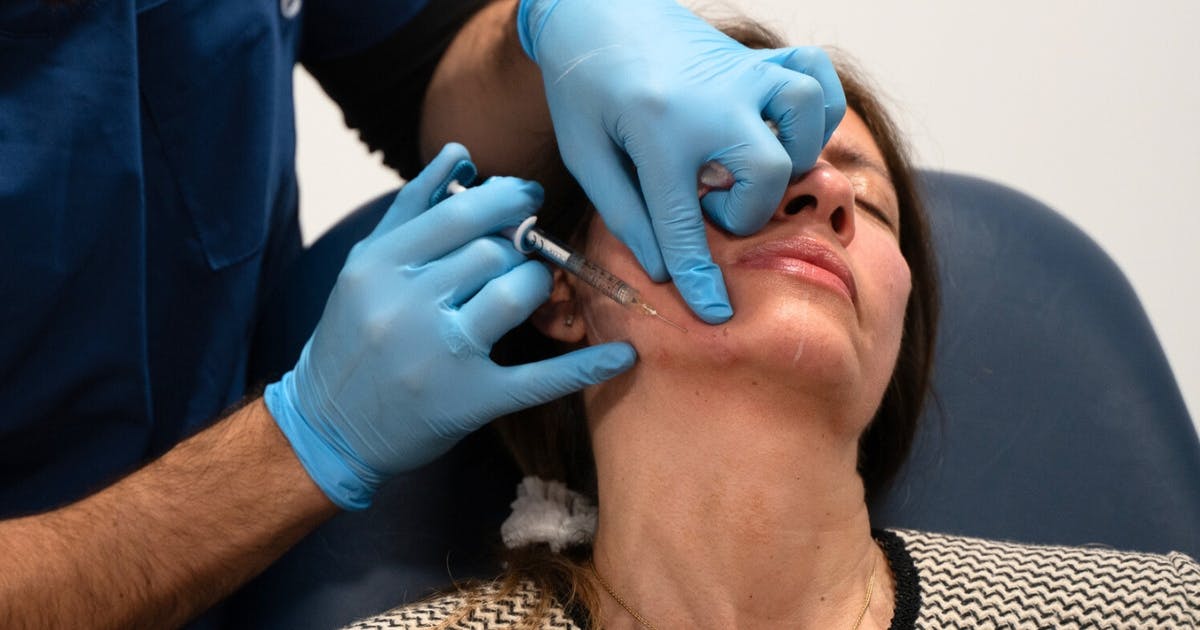
How do you prevent filler complications from jawline contouring treatments?
Dr Lindsay set out five clear steps that can help aesthetics practitioners to avoid filler complications when injecting chin or jaw filler.
We’ve omitted the most obvious one, which every cosmetic injector should follow for infection prevention: use of aseptic non-touch technique.
1. Know your facial anatomy
She stresses the importance of “knowing your anatomy, where you expect the blood vessels to be and at what depth.” This is “vital for preventing vascular events”.
2. Aspirate
“Using aspiration can help you, as a cosmetic injector, to recognise if you’re in a blood vessel,” she explains. Whilst some practitioners consider aspirating to be unnecessary, if you have quick and easy steps to help improve your patient’s safety, why wouldn’t you take them?
3. Inject slowly
“A slow injection technique helps you to quickly identify blanching skin and stop injecting,” says Dr Lindsay. “This can prevent wider spread damage.”
4. Use a cannula to inject jawline filler
“Using a cannula in higher risk areas can reduce the risk of blood vessel puncture,” she counsels.
5. Find out if your patients have had these types of surgery
Be cautious with patients who’ve had orthodontic surgery or facelift surgery,” notes Dr Lindsay. “These operations can alter the normal course of blood vessels.” This would be a fantastic scenario in which to employ ultrasound technology to determine the exact anatomy. However, dedicated training in ultrasound for aesthetic medicine is required to be able to read the screen properly.
How do you manage these complications if they occur?
Dr Lindsay is clear, “Prevention is better than cure. However, should the worst happen, the earlier a vascular occlusion or embolism is identified, the better.
Initial steps in filler complication management
“Firstly, stop injecting as soon as you suspect a vascular occlusion. Look for signs of pallor, mottling of the skin and reduced capillary refill.
“A patient may report altered sensation or pain in the area. Be aware that, due to local anaesthetics in the filler, pain may develop later.
“Once identified, apply a warm compress to the area to dilate the blood vessels. You should also use firm massage to try to displace it.”
Consenting your patient for hyaluronidase treatment
“The patient should then be consented for the use of hyaluronidase,” says Dr Lindsay.
Some aesthetic practitioners now prefer to obtain their patients’ consent to various complications management solutions in advance.
By getting this at the same time they consent to the actual treatment, you’re also aware of any potential issues. For example, if your patient does not consent to the use of hyaluronidase, it’s better you know this ahead of time. It’s not something you want to find out when there are signs of a vascular event appearing!
Administering hyaluronidase for jawline or chin filler complications
Dr Lindsay urges, “If you have help available within your clinic - ask for it. If you’re a solo practitioner this is where your membership to a complications group comes in useful.
“Hyaluronidase should be mixed to a high concentration, low volume and then injected throughout the area of skin changes.
“This area should then again be thoroughly massaged as hyaluronidase is designed to penetrate through tissues.
“The patient should then be observed and reassessed. If the capillary refill is not improving, this procedure should be repeated hourly, up to 4 times.”
She adds, “Should filler embolism from the chin to the tongue present, the tongue should also be injected with hyaluronidase. This is in addition to the initial injection point on the chin.
“Your patient should have daily reviews to ensure there are no early signs of tissue necrosis.”
How can injectors learn how to prevent and manage filler complications?
Dr Lindsay is not only a Harley Academy mentor, she’s also one of our Level 7 Diploma graduates.
She advises, “I would always recommend having a thorough basic understanding of facial anatomy, in line with what’s taught on our Ofqual-regulated Level 7 qualification course.
“Also, included in this is an eLearning module on complications management.”
This is our online aesthetics course, Preventing & Managing Filler Complications. It’s included free of charge with our Level 7 Diploma training programme, as Dr Lindsay says. You can also purchase this as a standalone course if you’re not a Level 7 trainee.
She concludes, “I would also strongly advise anyone starting injecting to be a member of a complications group that offers a 24 hour helpline.”
You can also hone your filler injection techniques and learn how best to combined treatments safely in our Facial Contouring Masterclass. This is a great option for busy aesthetic practitioners who want to refresh their techniques and ensure they're injecting safely following latest evidence-based guidance.
We hope this information has helped you to feel more confident about the steps required to prevent and manage filler complications relating to jawline contouring. If you have any additional questions, let us know using the chatbot function in the bottom right hand corner of this screen.
All information correct at time of publication
Download our full prospectus
Browse all our injectables, dermal fillers and cosmetic dermatology courses in one document
By submitting this form, you agree to receive marketing about our products, events, promotions and exclusive content. Consent is not a condition of purchase, and no purchase is necessary. Message frequency varies. View our Privacy Policy and Terms & Conditions
Attend our FREE open evening
If you're not sure which course is right for you, let us help
Join us online or in-person at our free open evening to learn more
Our Partners




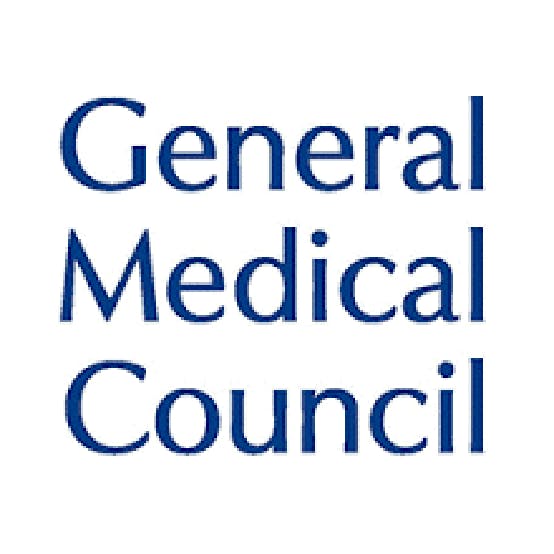









STAY INFORMED
Sign up to receive industry news, careers advice, special offers and information on Harley Academy courses and services


